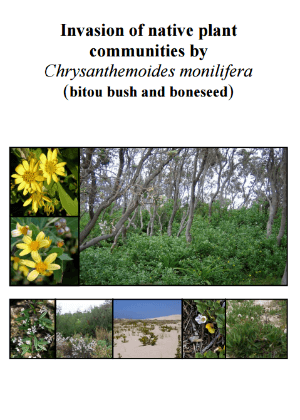Threat abatement plans (TAP)
The Office of Environment and Heritage developed the Threat Abatement Plan (TAP) for the invasion of native plant communities by Chrysanthemoides monilifera (bitou bush and boneseed) in NSW, known as the Bitou TAP, a process for identifying and prioritising biodiversity at risk from widespread weeds and sites for control. The TAP approach was also used to develop the national Plan to Protect Environmental Assets from Lantana.
It is not feasible (or a good investment) to apply the TAP approach to every individual weed species impacting on biodiversity, as many have overlapping distributions, impacts and management requirements. We have developed a site-led approach that applies the TAP process to multiple weed species on a landscape scale.
To ensure that management of widespread weeds has clear conservation outcomes the Office of Environment and Heritage has established:
- which widespread weeds pose a threat to biodiversity on a regional scale
- what biodiversity is at risk and needs urgent protection
- the sites where control will be most beneficial
- the monitoring required to assess both the effectiveness of control and the response of biodiversity at risk.
Statewide strategy – Biodiversity Priorities for Widespread Weeds (BPWW)
The Biodiversity Priorities for Widespread Weeds (BPWW) – Statewide framework is a joint project between NSW Department of Primary Industries, NSW Office of Environment and Heritage and the former 13 Catchment Management Authorities (CMAs, now Local Land Services). It uses an adapted Threat Abatement Plan (TAP) approach to identify and prioritise widespread weeds impacting on biological assets and sites for weed control.
The BPWW complements the NSW Invasive Species Plan in managing widespread weeds.


